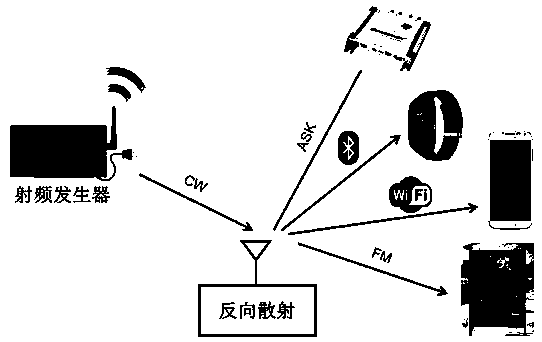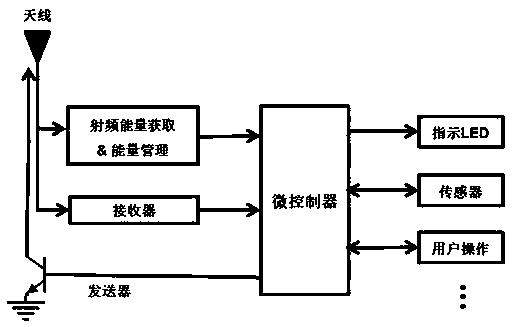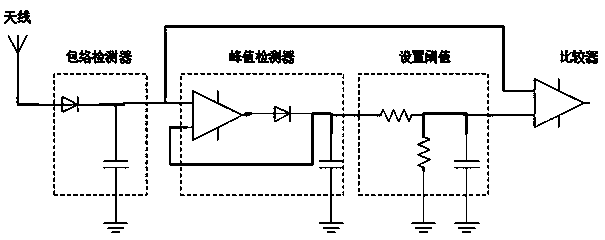Cross-protocol communication platform based on passive sensing technology
A communication platform and sensing technology technology, applied in the field of Internet of Things information systems, can solve the problems of inability to communicate, cannot bring its own energy, and cannot realize free communication between various devices, and achieve the effect of improving mutual communication.
- Summary
- Abstract
- Description
- Claims
- Application Information
AI Technical Summary
Problems solved by technology
Method used
Image
Examples
Embodiment approach
[0021] Wherein the front part of the radio frequency and the microcontroller and the sensor part adopt the mature existing design scheme, the present invention mainly focuses on the design of its receiver, transmitter and adaptive adjustment mechanism, the specific implementation is as follows:
[0022] (1) Cross-protocol communication platform receiver design
[0023] There are four main components in the receiver, such as image 3 As shown, among them: the envelope detector, its role is to remove the carrier part of the received signal, the device includes diodes and capacitors, through reasonable design of the debugging value, so that its frequency is consistent with the frequency of the modulated signal in the received signal, and envelope detection is realized ;Peak finder, its main function is the peak value of the received signal in the storage capacitor; set the threshold circuit to realize the halving of the threshold; finally the comparator compares the received sign...
PUM
 Login to View More
Login to View More Abstract
Description
Claims
Application Information
 Login to View More
Login to View More - R&D
- Intellectual Property
- Life Sciences
- Materials
- Tech Scout
- Unparalleled Data Quality
- Higher Quality Content
- 60% Fewer Hallucinations
Browse by: Latest US Patents, China's latest patents, Technical Efficacy Thesaurus, Application Domain, Technology Topic, Popular Technical Reports.
© 2025 PatSnap. All rights reserved.Legal|Privacy policy|Modern Slavery Act Transparency Statement|Sitemap|About US| Contact US: help@patsnap.com



